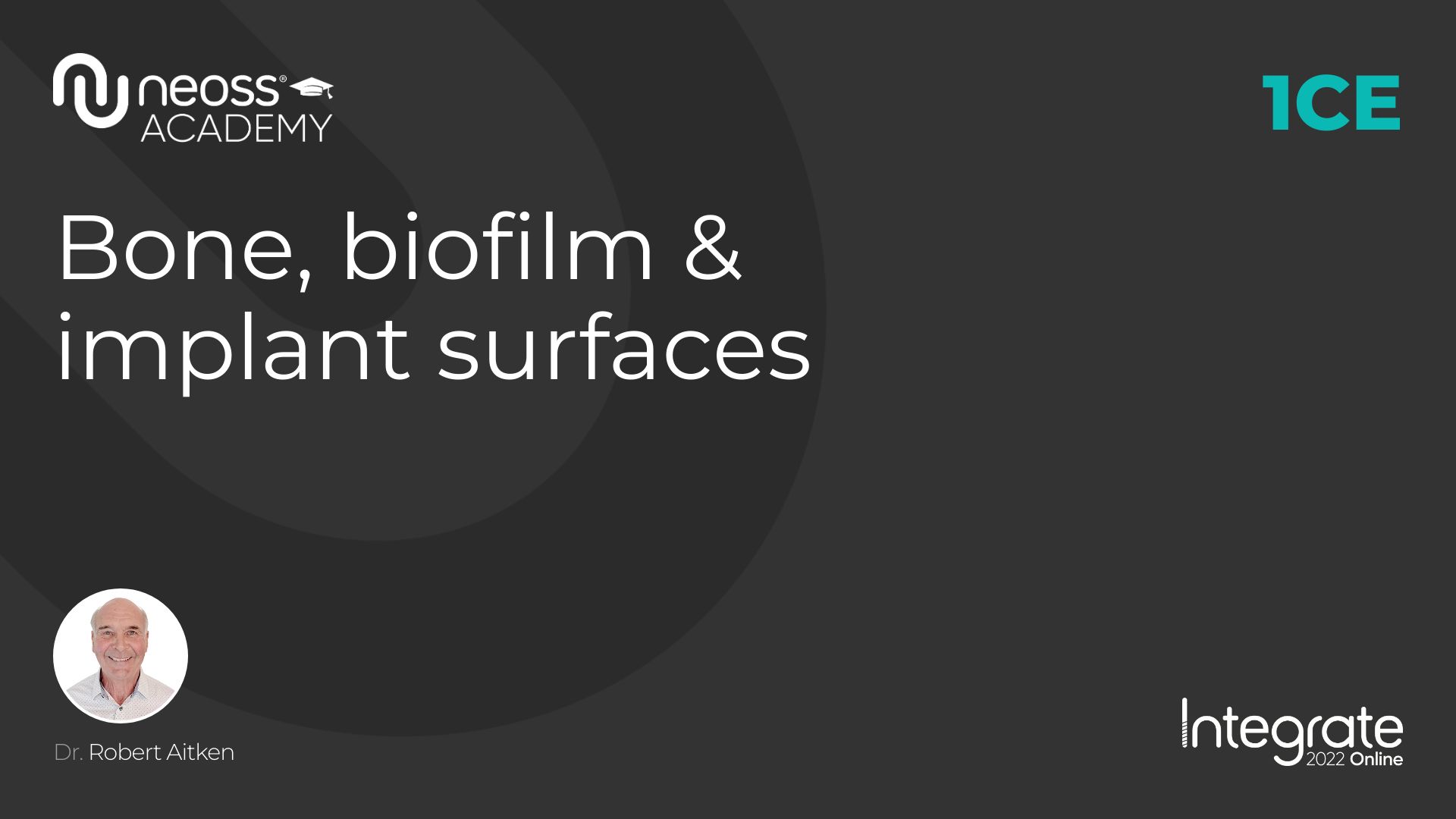Bone, biofilm & implant surfaces
This presentation will argue four subheadings:
(i) Human jawbone is not sterile, and it may support a spectrum of bacterial biofilms.
(ii) The implant system that you choose for your patient should have a Sa value of 1 micron or less, (such as Neoss), to avoid biofilm adhesion.
(iii) A new Bone Quality Index will be presented, where radiographic bone quality relates to the health/disease of the supported microbial communities.
(iv) Diseased bone can be returned to healthy bone, but it requires surgery (regenerative surgical debridement) and sometimes more than one surgery.
Synopsis:
Human bone is regarded as a mostly sterile tissue space. However, there are currently at least four peer reviewed papers and a PhD thesis which provide compelling evidence that human jawbone is not sterile, and in fact it supports permanent, resident, bacterial biofilm communities, that may range in microbial community health and/or pathogenicity. This new knowledge is a game-changer, especially when selecting an optimal implant surface, and, determining bone quality, prior to implant placement.
The original Swedish osseointegrated implants were turned on a lathe, with a surface roughness (Sa) of less than 1 micron, which quite fortuitously, protected them from the resident jawbone biofilms and, provided that they integrated, long-term marginal bone stability has been observed over many decades.
By the mid- to late nineties, modified surfaces were being promoted, because they integrated faster, with greater bone-to-implant contact and fewer early failures. However, some of these surfaces are extremely attractive to the resident jawbone biofilms, and, unlike the benign, fibrous encapsulated failure seen about turned (machined) implants, destructive, cupping bone failure after a few to several years began to be observed.







